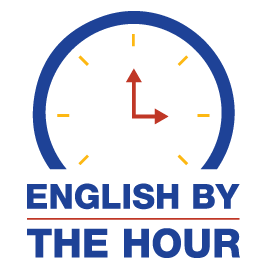One Big Drawback
The more I do Presence & Speech Coaching, the more I realize that most people have one thing that is holding them back. It might be an underlying belief, or it might be a muscle pattern, or it might be a misconception. Of course, that one “drawback” could be comprised of many specific components, but there’s usually one overarching issue/concern/ area that if addressed, helps them to get back on track to achieve their goals.
All of us have blind spots. Based on our life experiences, we learn to see the world a certain way, and as we progress in our careers, the demands of success change. We need to change with them, but often the blind spots get in the way.
How do you figure out what your own big drawback is so you can address it?
Look for Patterns: Many of us dismiss anything that isn’t positive. It makes sense. No one likes to be criticized, and often people don’t do it in a constructive way. Even if they do, we can still choose to dismiss it because it doesn’t feel good or we are afraid we can’t change it anyway. If you can see patterns in your life that result from the tendency you are shying away from, you can begin to create change.
- For example, let’s say that you were shy as a child, and as an adult, you learned to be more outspoken, but sometimes when you said things, people became angry, relationships suffered, or you lost opportunities. You may have decided that speaking up wasn’t such a good thing, leading you to be more reserved. Perhaps this was ok as an individual contributor, but as you climbed the corporate ladder, you found becoming an executive required you to speak up. Since you haven’t been practicing it, you find it difficult, and you have developed various maneuvers to avoid speaking up. Perhaps you are great at letting others do that for you, or maybe you address concerns in writing. In any case, admitting that speaking up in the face of rejection or negative consequences is a challenge and a drawback for you is important for you to develop executive presence.
Focused Practice: Once you discover your “big drawback,” you’ll want to work on it, and not expect change to come easily. It might have layers of challenges around it that you need to address. You won’t need to do it all immediately, but it will be important to construct a routine around creating the changes you desire and tying these changes to other areas of your life.
- For example, let’s return to the person who realized being shy as a child and not speaking up was preventing him/her from achieving executive presence. Simply speaking up more may not solve the problem. Perhaps all the relationships this person has formed over the years are built on that more reserved personality trait, so speaking up may create more conflict. This doesn’t mean it’s not possible to change. Instead, it will be important to learn a variety of coping mechanisms for dealing with conflict that is now coming up as a result of speaking up. Each time you address one of the issues related to the drawback, you will find new challenges. It’s important to keep pursuing the goal of improving and to realize that the drawback is multi-layered and progress with take time, awareness and practice.
Finding the “one big drawback” is by itself a challenge, and of course, there could be more than one! I encourage people to focus on only one because generally one big one will lead to plenty of opportunities to work on yourself and open doors to new possibilities. Just being aware that there are patterns we all have as blind spots will take you to the next level.



